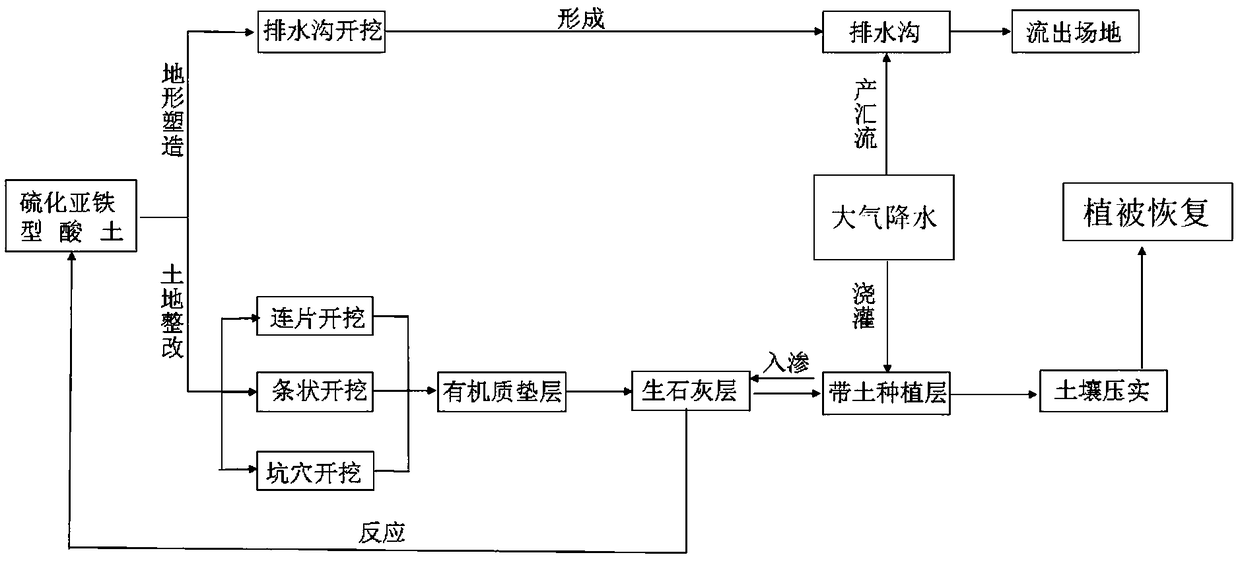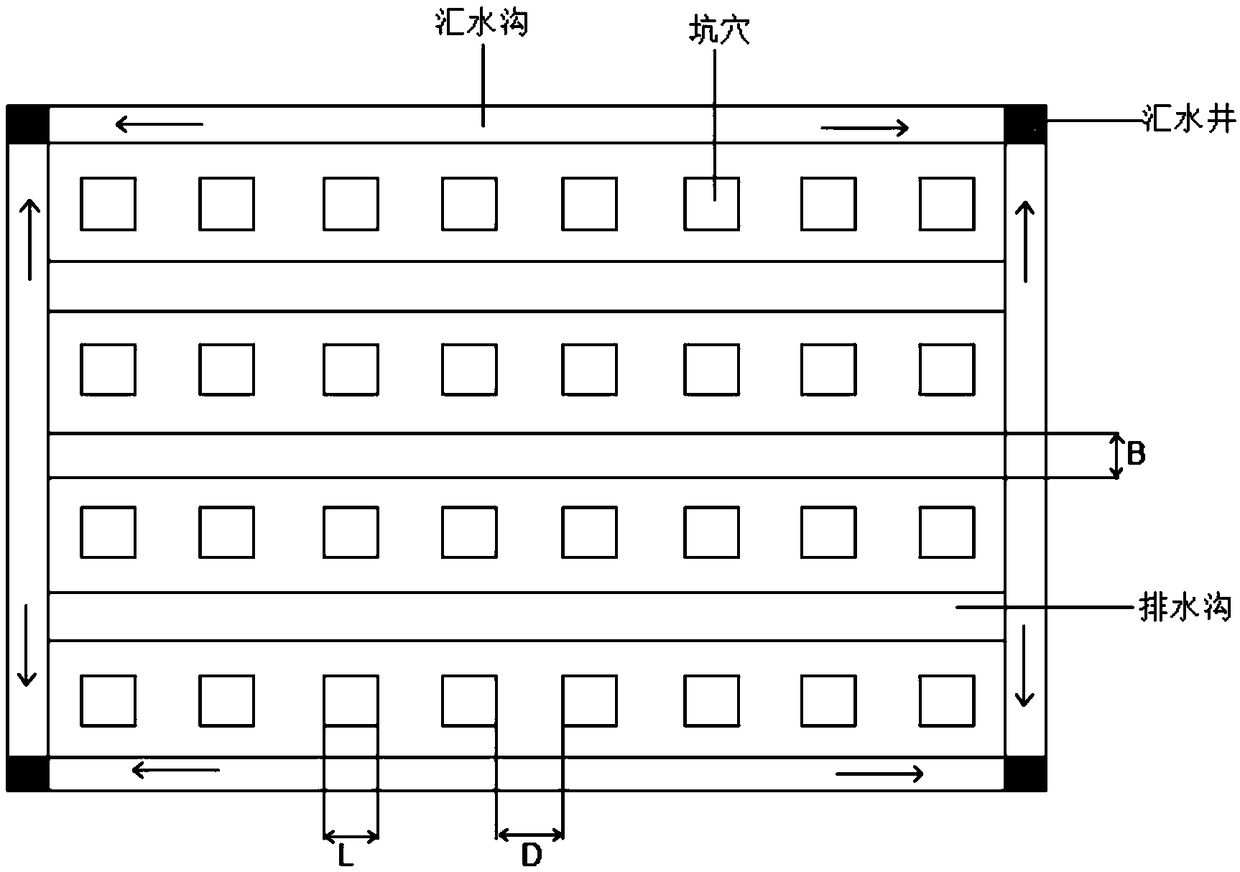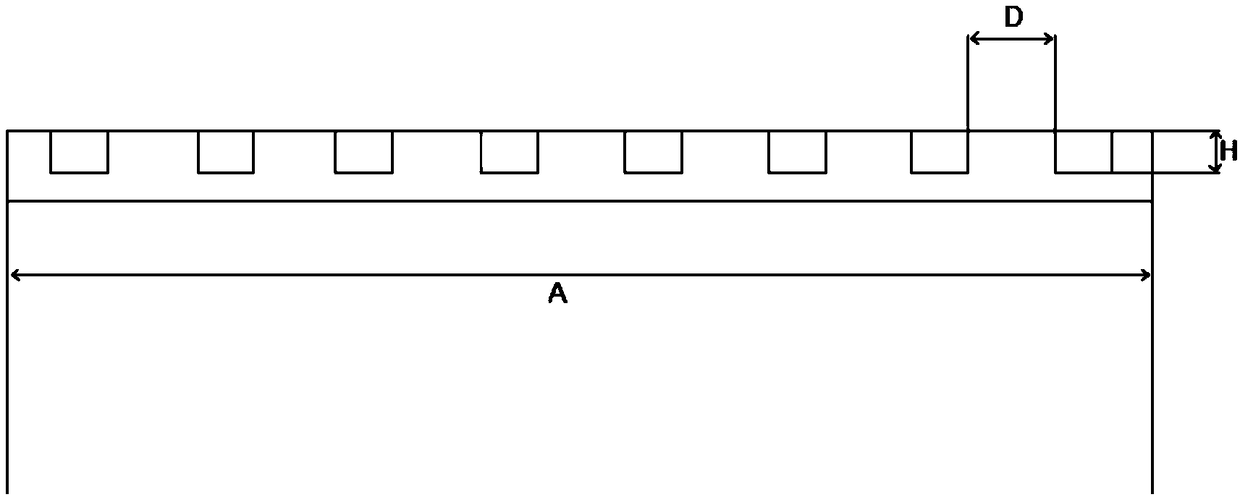Ferrous sulfide acid soil improvement and bare land vegetation recovery method
A ferrous sulfide and vegetation restoration technology, applied in the fields of land preparation methods, botanical equipment and methods, planting substrates, etc., can solve the problems of secondary pollution, incapable acid soil improvement, and labor, material, and financial resources to transport zeolite, and achieve the goal of maintaining diversity. the effect of preventing reacidification
- Summary
- Abstract
- Description
- Claims
- Application Information
AI Technical Summary
Problems solved by technology
Method used
Image
Examples
Embodiment 1
[0040] Embodiment one: a ferrous sulfide type acid soil improvement and bare land vegetation recovery method: its steps include: (1) soil general survey: respectively in the gravel field of highland area, low-lying land area, transitional zone area that need to improve land , sandy land, and bare land, the depth of the soil is 20cm, and the pH value is measured after mixing. The soil pH value is measured by litmus paper or color plate quick test method, or by water immersion method, litmus paper, Color guide quick test method and water immersion method are existing measuring methods;
[0041] (2) Soil classification: According to the soil properties and pH value of step (1), the soil is divided into three categories: sandy soil, red irony soil, and black irony soil, wherein the pH value of sandy soil is more than 3.56, and the red irony soil The pH value of the soil is 3.00-3.50, and the pH value of the black iron soil is below 3.00;
[0042] (3) determine quicklime consumpti...
Embodiment 2
[0058] Embodiment two: the difference between this embodiment and embodiment one is:
[0059] (7) Planting plants: select the plants cultivated in the step (5) to be planted on the improved land, when planting, adopt the bag seedling raising and transplanting method, and mix the leguminous and gramineous plants, and improve in the step (6) Holes were dug on the land to be planted, and wedelia, ciliated duckbill, and teff were transplanted out of bags in different caves, and then the excavated debris was covered around the caves and pressed. Then plant one or more of lentils, wing beans, and stylo around the cave, and add bahia grass appropriately;
[0060] Laying grass blankets on the gravel ground to be planted and the light floor to be improved, the grass blankets are the grass blanket bricks that the size of the Ayursia chinensis and the false thrift grass cultivated by the bag seedlings of step (5) are respectively planted into specifications of more than 30cm*30cm, and th...
Embodiment 3
[0062] Embodiment three: the difference between this embodiment and implementation one is:
[0063] (7) Planting plants: select the plants cultivated in the step (5) to be planted on the improved land, when planting, adopt the bag seedling raising and transplanting method, and mix the leguminous and gramineous plants, and improve in the step (6) Dig caves on the land to be planted, and transplant paspalum, imperata, and crabgrass into different caves, and then cover the excavated debris around the caves and compact them, and then plant them in the caves. Plant one or more of chain pods, wing beans, and stylo around the surrounding area, and add bahia grass appropriately;
[0064] On the improved gravel ground to be planted and the bare floor, the grass blanket is laid. The grass blanket is that the honey grass and the false thrift grass cultivated by step (5) bag seedlings are respectively planted into the grass blanket bricks whose specifications are more than 30cm*30cm. The...
PUM
| Property | Measurement | Unit |
|---|---|---|
| Thickness | aaaaa | aaaaa |
| Thickness | aaaaa | aaaaa |
Abstract
Description
Claims
Application Information
 Login to View More
Login to View More - R&D
- Intellectual Property
- Life Sciences
- Materials
- Tech Scout
- Unparalleled Data Quality
- Higher Quality Content
- 60% Fewer Hallucinations
Browse by: Latest US Patents, China's latest patents, Technical Efficacy Thesaurus, Application Domain, Technology Topic, Popular Technical Reports.
© 2025 PatSnap. All rights reserved.Legal|Privacy policy|Modern Slavery Act Transparency Statement|Sitemap|About US| Contact US: help@patsnap.com



